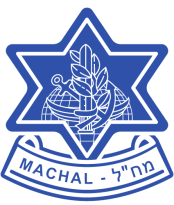On the evening of July 11, 1948, a DC-3 co-piloted by Eddy Kaplansky bombed a crossroad outside Kuneitra on Syria’s Golan Heights. It was vital that the crossroad be destroyed, as through it flowed re-enforcements and supplies for Syria’s toe-hold at nearby Mishmar Hayarden. But only near-misses were observed, and the cross-roads remained usable. ¹
Another crew, headed by Cyril Katz, had a try the following evening, July 12, but with near disastrous results. The Dakota was ZS-AVK, then also known as number 83, in PAAC livery. Katz’s flight crew consisted of co-pilot Arthur Cooper, radio operator Lionel “Joe” Friedman, and navigator Simon Waks. ²
On board was a bomb-chucker team – headed by Seymour Gottlieb – which included Barnett “Buddy” Alberg, Abe Danovitch, Eli Ehrlich (Ered), and one or two others. ³ Also on the plane was radio operator David Drutz (Canada), for whom it was to be a familiarization flight, as well as Kaplansky, who had offered to point out the target after Katz expressed concern during briefing about identifying it, as he and his flight-crew had not been there before. 4
During the second run over target, Alberg and his partner prepared to heave out a 100-kilo bomb, a few of which were on board for experimental purposes in addition to the usual 50-kilo ones. Being unaccustomed to its weight, they had some difficulty carrying the bomb to the door-opening. As they heaved it out, it half-slipped from their hands and its tail-fin hit the rear cargo-door above the lower lock. The jolt broke the lock, and pushed the lower part of the door a few inches out into the slipstream, ripping it from its hinges and slamming it against the left stabilizer. The impact bent the door into a V-shape over the leading edge of the stabilizer, where the slipstream held it fast, causing the aircraft to snap into a spiral dive to the left. 5
Apparently unaware of the seriousness of their situation, Katz turned over control to his co-pilot and went back to the main cabin to see what had happened. He then gave an order to bail out, but before anyone could manage to do so, co-pilot Arthur Cooper somehow managed to get the plane out of the spiral dive. The bail-out order was academic to Cooper and Friedman, as neither of them had a parachute. 6 Katz then replaced his bail-out order with an order to jettison the bombs. The one attempt to bail-out was foiled when the rip-cord of the author’s chest-pack caught on a floor-bolt and its silk spilled onto the cabin floor. He had been forced to the floor by the centrifugal force of the spiral dive. 7
With the door still held fast against the stabilizer, the aircraft shuddered and lost height during the entire flight back to the Ramat David air base. The door finally fell from the stabilizer during the final stages of a straight-in approach from the east, when the reducing airspeed reached the point at which the air-resistance was too low to hold it there. The pilots seemed unaware of the situation and there was no time to inform them, as moments later they did a wheels-up landing on the runway. That was at 22.10 hours. The propellers and engines were damaged and minor injured were suffered by some of the crew. 8 The door was found close by the next day. 9
In a letter dated 28th August 1998 written by the author to Frank Alberg, brother of “Buddy” Alberg, Eddy Kaplansky wrote, “Thanks to the tenacity and skill of the co-pilot, all of us on that 103 Squadron Dakota lived to see another day.”
Author: Eddy Kaplansky
Sources:
1 Author’s recollections
2 Henry Katzew’s South Africa’s 800
3 Debriefing report: IDF Archives 895/52156; Ehrlich’s and author’s recollections
4 Drutz’s letter 040990; Ehrlich’s and author’s recollections; Sam Rose’s letter 181297
5 Witnessed by the author. Debriefing report – IDF Archives 895/52/56
6 Arthur Cooper’s fax 9 April 1998
7 Eli Ered’s and author’s recollections.
8 Debriefing report – IDF Archives 895/52/56
9 Eli Ered’s (Ehrlich) letter 20.12.97 and telephone conversation 28.12.1977.

